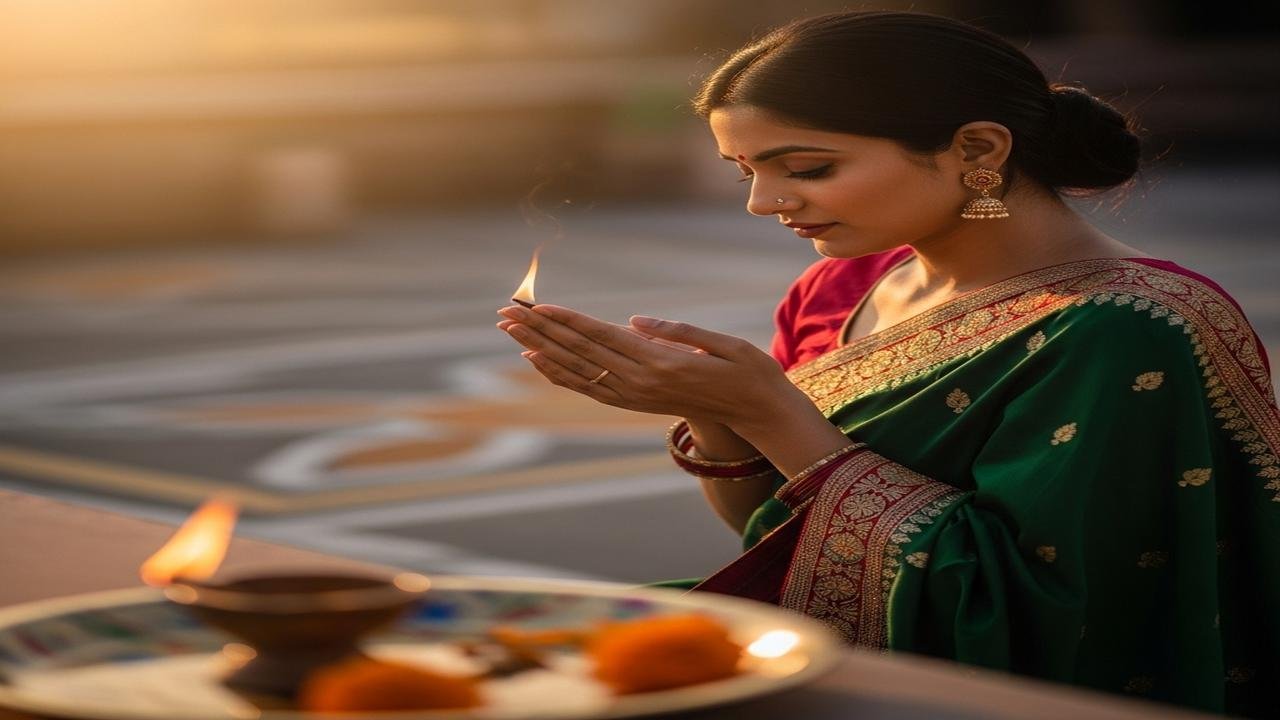The Hidden Reason Women Fast on Karwa Chauth

Why Do We Keep Fasts on Karwa Chauth?
On a soft autumn evening, the sky deepens and small lamps glow in windows. Women gather, dressed in red and gold, their hands adorned with henna. Laughter and prayers weave together as they prepare for Karwa Chauth. This festival, celebrated with devotion across many North Indian homes, is both a personal vow and a shared story of love.
At its heart, Karwa Chauth is a fast taken by married women for the well-being and long life of their husbands. The fast begins before sunrise after a special meal called sargi, lovingly prepared by the mother-in-law. From dawn until the moon rises, women neither eat nor drink. As night falls, they perform a puja with an earthen pot called a karwa, listen to the Karwa Chauth katha, and finally view the moon through a sieve. Only after this ritual do they break their fast, often with the help of their husband offering the first sip of water and the first morsel of food.
The rituals are full of symbolism. The karwa, a simple clay pot, represents the home and the life that a woman nurtures. The sieve through which the moon is seen stands for filtering the world’s distractions so one can receive divine blessings. Henna on hands and the red of the sari symbolize love, fertility, and the sacred bond of marriage. Each act is a gentle reminder: devotion is expressed through care, sacrifice, and presence.
Stories and legends deepen the meaning of the fast. One beloved tale is of Veervati, a woman who fasted for her husband’s life. When she broke her fast before moonrise due to family pressure, misfortune followed. Yet when she completed her vow with sincere heart, her husband was protected. Many also recall the devotion of Savitri, who outwitted death with steadfast love. These narratives teach that faith and intentional action have power, and that love often asks for patience and courage.
Karwa Chauth is also a day of community. Women meet to share stories, sing folk songs, and perform the puja together. These gatherings create a strong web of support. In crowded lanes and quiet courtyards alike, the festival becomes a celebration of companionship—of mothers, daughters, sisters, and friends who stand together in ritual and song.
In modern times, the festival has evolved. Many couples now fast together, men participate in prayers, and younger women may fast for their future life partners. Some women choose to observe the fast partially, or in alternate ways that fit their physical needs and beliefs. This adaptation shows that tradition can be both rooted and living—honored while also being kind to the individual.
Beyond custom, Karwa Chauth teaches gentle spiritual lessons. The fast cultivates discipline, a mindful pause from daily haste, and an outward expression of gratitude for companionship. It invites reflection on the vows we make—whether to a partner, to family, or to one’s own values. In the quiet hours of a long fast, many women find a deeper sense of inner strength and faith.
Main rituals at a glance:
- Sargi: Pre-dawn meal from the mother-in-law.
- Day-long fasting: Abstaining from food and water until moonrise.
- Puja: Evening prayers with the karwa and katha recitation.
- Moon viewing: Seeing the moon through a sieve and receiving blessings.
- Breaking the fast: Husband offers the first sip and bite.
Karwa Chauth is more than a ritual; it is a living story of care, community, and faith. It reminds us that devotion can be both traditional and evolving, and that love often expresses itself in small, mindful acts.
May the quiet strength of this fast inspire gratitude and togetherness in your own life.
